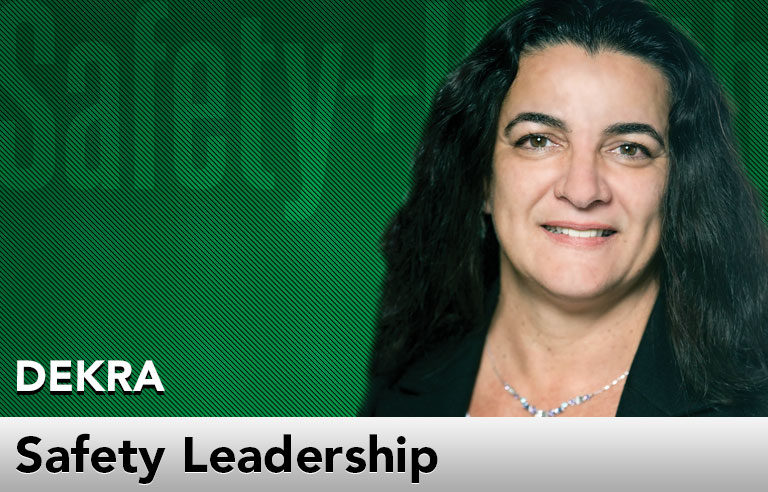Safety Leadership: Setting supervisors up for safety success

Editor’s Note: Achieving and sustaining an injury-free workplace demands strong leadership. In this monthly column, experts from global consulting firm DEKRA share their point of view on what leaders need to know to guide their organizations to safety excellence.
Why is empowering and equipping supervisors to be effective safety leaders important? Supervisors usually have the strongest influence over the workforce. To be successful in safety, we need to get them engaged in safety activities.
Adding the responsibility of safety activities (participating in job safety briefings and conducting safety observations, etc.) to supervisors’ already hectic days is a challenge. However, developing supervisors into safety leaders is fundamental to ensuring worker safety and well-being.
The saying, “What’s important to my boss is important to me,” holds true in any organization, as employees’ view of the organization is often through the lens of their direct supervisor. Therefore, to set supervisors up for success, provide them with strategies that enhance safety activities by incorporating leadership best practices.
Safety leadership skills
Equipping supervisors with transformational leadership skills is critical. On any given day, leaders will have opportunities for transformational conversations with their direct reports, allowing them to shape attitudes and beliefs on the culture as well as demonstrate their safety vision.
Recently, while at a manufacturing plant, we observed an employee who didn’t properly set up forklift guardrails. This could’ve been an opportunity for the leader to engage with the employee, asking about the exposure. Unfortunately, the leader instructed the employee to put the guardrail down, then took a photo and walked away. This leader missed an opportunity for a transformational conversation with the employee. As a result, the unsafe behavior will most likely be repeated.
Every interaction with an employee is a good opportunity to influence and shape behavior. Establishing personal relationships with direct reports is key to increased engagement and collaboration. Leaders can do this by identifying their teams’ needs and then, through coaching and mentoring, help them develop their strengths and skills. The result will be a more open and transparent culture, with team goals aligned with the organization’s vision.
From a safety perspective, effective leaders actively listen to their teams, ask questions and recognize the signs that could lead to workplace incidents, as well as the signs of brain-centered hazards such as stress, urgency and fatigue. Showing care and concern for the well-being of your workers goes a long way toward building credibility, trust and psychological safety.
Critical safety tasks
Leaders who focus on understanding the different aspects of safety exposures can identify factors such as physical conditions, employee well-being, systemic issues and human behaviors. Promoting meaningful safety conversations with employees is fundamental to creating moments of safety transformation. If leaders understood that about half of daily tasks are completed using the “fast brain” (the habit-driven, unconscious part of the brain), they could – through their daily messages – raise awareness of the safety exposures to which their teams may have become blind. This would increase the possibility of frontline employees pausing the job, analyzing it and taking actions to control the exposure when they detect changes.
Many incident and serious-injury investigations discover that not pausing the job to reevaluate the situation is a significant contributing factor and likely linked to fast-brain functioning. Empowered, well-equipped, caring, honest and trustworthy safety leaders help create a culture that fosters, accepts and supports each employee’s safety decisions.
This article represents the views of the author and should not be construed as a National Safety Council endorsement.
 Claudia Lima is a principal consultant with DEKRA’s (dekra.us) consulting practice. Lima conducts organizational culture assessments, as well as provides coaching and leadership development for senior site leadership, middle managers and supervisors. She also implements behavior-based safety and exposure-reduction systems to help organizations achieve and sustain improvements in their safety performance and overall organizational effectiveness.
Claudia Lima is a principal consultant with DEKRA’s (dekra.us) consulting practice. Lima conducts organizational culture assessments, as well as provides coaching and leadership development for senior site leadership, middle managers and supervisors. She also implements behavior-based safety and exposure-reduction systems to help organizations achieve and sustain improvements in their safety performance and overall organizational effectiveness.
Direct to your inbox: Sign up to be notified in email about new "Safety Leadership" columns.
Post a comment to this article
Safety+Health welcomes comments that promote respectful dialogue. Please stay on topic. Comments that contain personal attacks, profanity or abusive language – or those aggressively promoting products or services – will be removed. We reserve the right to determine which comments violate our comment policy. (Anonymous comments are welcome; merely skip the “name” field in the comment box. An email address is required but will not be included with your comment.)

